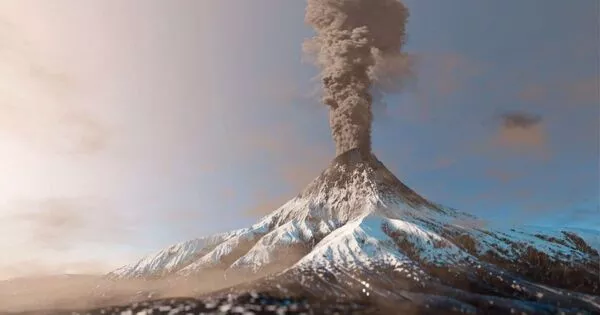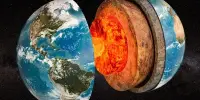Volcanic eruptions have a large impact on the Earth’s climate because they release large amounts of gases, aerosols, and particulate matter into the atmosphere. These volcanic emissions can alter the amount of sunlight reaching the Earth’s surface, causing temperature and precipitation patterns to change.
According to researchers, the cooling effect of volcanic eruptions on Earth’s surface temperature is likely underestimated by a factor of two, and possibly by a factor of four, in standard climate projections.
While this effect is far from sufficient to offset the effects of human-caused global warming, the researchers, led by the University of Cambridge, claim that small-magnitude eruptions are responsible for up to half of all sulphur gases emitted into the upper atmosphere by volcanoes.
The findings, published in the journal Geophysical Research Letters, suggest that improving the representation of volcanic eruptions of all magnitudes will lead to more robust climate projections.
The effect of volcanoes on the global climate is relatively minor when compared to the greenhouse gases emitted by human activity, but it’s critical that we include them in climate models in order to accurately assess temperature changes in the future.
May Chim
Humans have no control over where and when volcanoes erupt, but volcanoes do play an important role in the global climate system. When volcanoes erupt, sulphur gases are released into the upper atmosphere, where they combine to form tiny particles known as aerosols, which reflect sunlight back into space. The volume of volcanic aerosols produced by large eruptions, such as Mount Pinatubo in 1991, is so large that it can cause global temperatures to fall on its own.
However, these large eruptions only happen a handful of times per century — most small-magnitude eruptions happen every year or two.
“The effect of volcanoes on the global climate is relatively minor when compared to the greenhouse gases emitted by human activity, but it’s critical that we include them in climate models in order to accurately assess temperature changes in the future,” said first author May Chim, a PhD candidate in the Yusuf Hamied Department of Chemistry.
Standard climate projections, such as the Intergovernmental Panel on Climate Change (IPCC) Sixth Assessment Report, assume that explosive volcanic activity will be at the same level as it was between 1850 and 2014, and ignore the effects of minor eruptions.

“These projections mostly rely on ice cores to estimate how volcanoes might affect climate, but smaller eruptions are too small to be detected in ice-core records,” Chim explained. “We wanted to make better use of satellite data to fill in the gaps and account for eruptions of all magnitudes.”
Chim and her colleagues from the University of Exeter, the German Aerospace Centre (DLR), the Ludwig-Maximilians University of Munich, Durham University, and the UK Met Office generated 1000 different scenarios of future volcanic activity using the most recent ice-core and satellite records. They chose scenarios representing lower, median, and high levels of volcanic activity, and then used the UK Earth System Model to run climate simulations.
Their simulations show that the effects of volcanic eruptions on climate, such as global surface temperature, sea level, and sea ice extent, are overestimated because current climate projections overestimate the plausible future level of volcanic activity.
They discovered that the effect of volcanoes on the atmosphere, known as volcanic forcing, is being underestimated in climate projections by up to 50% for the median future scenario, due in large part to the effect of small-magnitude eruptions.
“We found that not only is volcanic forcing being underestimated, but small-magnitude eruptions are actually responsible for as much as half of the volcanic forcing,” said Chim. “These small-magnitude eruptions may not have a measurable effect individually, but collectively, their effect is significant. I was surprised to see just how important these small-magnitude eruptions are – we knew they had an effect, but we didn’t know it was so large.”
Although the cooling effect of volcanoes is being underestimated in climate projections, the researchers stress that it does not compare with human-generated carbon emissions.
“Volcanic aerosols in the upper atmosphere typically stay in the atmosphere for a year or two, whereas carbon dioxide stays in the atmosphere much, much longer,” Chim explained. “Even if we had an exceptionally high period of volcanic activity, our simulations show that it would not be enough to halt global warming. It’s like a passing cloud on a hot, sunny day: the relief is fleeting.”
According to the researchers, fully accounting for the effect of volcanoes can help make climate projections more reliable. They are now using their simulations to see if future volcanic activity could jeopardise the Antarctic ozone hole’s recovery, resulting in a relatively high level of harmful ultraviolet radiation at the Earth’s surface.
















